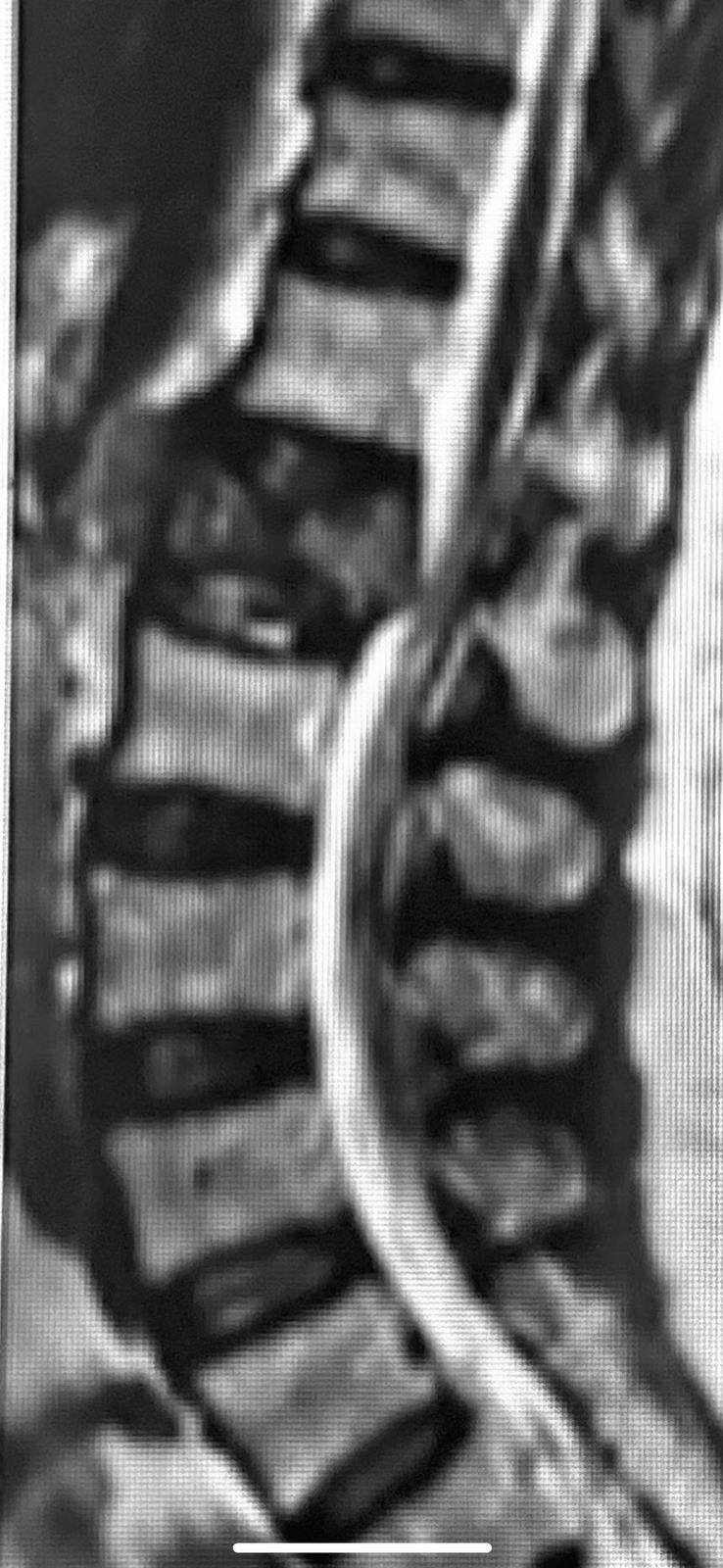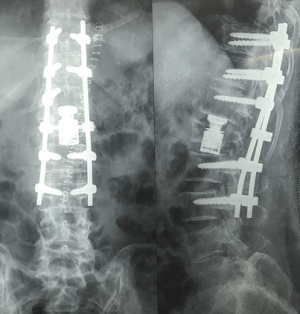Spinal Tumors
Spine Tumor: Diagnosis and Treatment
A tumor is an abnormal mass of tissue produced by controlled growth of cells. Tumor can be benign (non-cancerous) or malignant (cancerous). A Primary Spinal Tumors originates in spine and grow locally. A Secondary (Metastatic) Spinal Tumor originates in a distant organ of the body and then spreads to the spine. Spinal tumors can affect any part of the spine.
Spinal Tumor causes:
Spinal tumors can be divided in three categories:
- Intra-medullary Spinal Tumors: These tumors grow inside the spinal cord. Most of these tumors are primary spinal tumors. Example: Astrocytoma, Ependymoma, Lipoma. They can be difficult to remove due their presence inside the spinal cord.
- Intradural-Extramedullary Spinal Tumors: These tumors are located between the spinal cord and it’s thin covering (dura). Examples: Meningioma (tumor from spinal cord membrane), Schnawomma/ Neurofibroma (tumor from spinal nerves), certain Ependymomas. Mostly these are benign tumors, but they can be difficult to remove at times and may recur even after removal.
- Extradural Tumors: These tumors are located outside the spinal cord sheath. Most of these tumors are metastatic and affect vertebra leading to collapse and destruction of vertebral bodies. A Schwanomma/ Neurofibroma may also present as Extramedullary tumor. Most common tumor affecting vertebral bodies is Hemangioma, which is Primary tumor of the spine. It is a benign lesion and seldom symptomatic.
Intramedullary tumors are rare. Vertebral hemangiomas are most common benign primary spinal tumor. Spinal metastases are most common type of spinal tumors. Common primary site of origin for metastatic spinal tumors includes Lung, breast, prostate, gastro-intestinal tract, kidney, thyroid. Many blood cancers will involve spinal column due to presence of bone marrow inside vertebral bodies, e.g. multiple myeloma, lymphoma. Metastatic tumors primarily affect bony spine and then grow to cause compression of the spinal cord.
Spine Tumor Symptoms:
A spinal tumor may remain silent for long time. It might present with following symptoms-
- Nonspecific symptoms of local pain, swelling etc. This is most common presenting symptom.
- compression of spinal cord causing loss of sensation and weakness in arms/ legs, loss of bladder-bowel control, loss of dexterity and weakness in hand grip, loss of balance and spasticity in legs,
- destruction of vertebral bodies leading to severe pain, unstable spine, localized deformity (kyphosis), compression of spinal cord by displaced bone pieces and deformity.
Prompt diagnosis and appropriate treatment should be started to prevent complications. Outcome is dependent on several factors, including type of tumor, number of lesions, presence of distant metastasis, and severity of spinal cord compression.
Stage 4 spinal cancer symptoms:
Stage 4 spinal cancer, also known as metastatic or advanced spinal cancer, is a serious condition where cancer has spread to the spine from other parts of the body. Recognizing the symptoms of stage 4 spinal cancer is crucial for early diagnosis and appropriate medical intervention. In this brief article, we will explore some of the common symptoms associated with this advanced stage of the disease.
Persistent Back Pain
One of the hallmark symptoms of stage 4 spinal cancer is persistent and often severe back pain. The pain may worsen over time, and it’s usually not alleviated by rest or typical over-the-counter pain medications. This pain can be localized at the site of the tumor or radiate to other areas of the back and body.
Neurological Symptoms
As stage 4 spinal cancer progresses, it can exert pressure on the spinal cord, leading to neurological symptoms. These may include:
- Weakness or paralysis in the limbs
- Numbness or tingling in the extremities
- Difficulty walking or maintaining balance
- Loss of bladder or bowel control
Spinal Deformity
In some cases, advanced spinal cancer can cause structural changes in the spine, leading to deformities. These deformities may result in visible changes in posture, such as stooping or curvature of the spine. Such physical alterations can be accompanied by increased pain and discomfort.
Loss of Weight and Appetite
Cancer, including spinal cancer, can lead to unintended weight loss and a decreased appetite. As the disease progresses, the body may redirect its energy to fighting the cancer, resulting in a loss of muscle mass and overall body weight.
Fatigue and Weakness
Generalized fatigue and weakness are common symptoms in stage 4 spinal cancer patients. Cancer consumes a considerable amount of the body’s resources, leaving individuals feeling tired and lacking energy.
Respiratory Difficulties
In some cases, advanced spinal cancer can affect the thoracic spine and lead to respiratory difficulties. This can manifest as shortness of breath, chronic coughing, or chest pain.
Stage 4 spinal cancer is an advanced and aggressive form of the disease, and its symptoms can be debilitating. Early detection is crucial for effective treatment and improved quality of life for patients. If you or someone you know is experiencing any of these symptoms, it is essential to seek prompt medical attention. A thorough medical evaluation, including imaging tests and biopsies, can confirm the presence of stage 4 spinal cancer and help guide treatment decisions.
Diagnosis of Spinal Tumors:
A thorough history and physical examination is essential with special emphasis on neurological status of the patient. Following tests are usually done for an accurate diagnosis:
- X-ray: An x-ray is done to detect obvious bony pathology and to rule out other causes of back pain, e.g. spondylosis, spine fracture etc.
- MRI Scan: An MRI will show presence and spread of tumor. It is very helpful in detecting intramedullary tumors. MRI will also show lesions in other part of spinal columns.
- CT Scan: A CT is performed to assess bone anatomy in details and also when it’s not possible to do MRI. Specialized CT scan, e.g. PET Scan are used to detect presence of tumor in body.
- Bone Scan: Bone scan is a useful diagnostic test to detect primary bone tumors, infection and metabolic diseases involving the bone.
- Biopsy: Biopsy is required for histopathological diagnosis of tumor. This will also differentiate between a tumor and other bone involving lesions (e.g. infection), to differentiate a benign vs malignant tumor, and to determine type of malignant and metastatic tumor. This will help in choosing correct treatment for the spinal tumor as well as site of primary tumor in metastatic cases.
Tumor staging might also be required, especially in malignant cases. A whole body. Scan (e.g. PET Scan) and CT scan of lungs and abdomen is done to assess the extent of tumor in bone, soft tissue, spinal canal, adjacent and distant areas of the body. This helps in understanding prognosis, and to decide best treatment based on tumor type and staging.
Spinal Tumor Treatment:
Decision making for spinal tumor is a multidisciplinary approach involving spine specialist, medical oncologist, radiation oncologist and other medical specialists. Treatment is selected based on patient’s current symptoms, overall health, goal of treatment etc. Spinal tumor can be treated by non-surgical and surgical means.
Non-surgical treatment for spinal tumor includes observation, chemotherapy and radiation therapy. A benign tumor that has no/ minimal symptoms and is not progressing (based on regular MRI). Some tumors are sensitive to chemotherapy and/ or radiotherapy. Surgical treatment is required in following situations:
- Severe spinal cord compression,
- Progressive worsening of spinal cord compression symptoms during treatment,
- Severe bone destruction which can cause spine instability, increased pain, deformity and spinal cord compression,
- Severe pain not responding to medical treatment,
- To obtain biopsy in difficult cases.
Usually a spine decompression and fusion surgery is required in these cases. Spine fusion will give pain relief, correct and prevent progression of spine deformity, allow adequate spinal decompression to take place and prevent recurrence of spinal stenosis, allow early mobilization and prevent need of bed rest after surgery. In rare instances, where vertebral destruction is not significant and primary symptoms are of spine stenosis, a decompression only procedure can be done. An intramedullary tumor usually requires spinal cord decompression only.
If tumor is also sensitive to chemotherapy/ radiotherapy, it can be given before or after the surgery as per the tumor type and medical oncologist’s advice. Preoperative Embolization can be done to prevent excessive blood loss in highly vascular tumors. A glue-like substance (embolic agent) is injected inside the vessel that feeds the tumor.
Result of surgery will depend on various factors including type, stage and location of the tumor. A primary spinal tumor may be removed completely for a possible cure. In patients with metastatic tumors, surgery is usually palliative to provide pain relief, to help spinal cord recover and to give the patient a better remaining life. Surgery is considered only when patient is expected to live more than 3-4 months


Spinal tumors may manifest with persistent back pain, neurological symptoms like numbness or weakness in limbs, changes in posture, loss of appetite, and unexplained weight loss. If you experience any of these symptoms, consult a healthcare professional for an evaluation.
Benign spinal tumors may present with similar symptoms to malignant tumors, including back pain and neurological issues. However, benign tumors are non-cancerous and typically grow slowly. They might be asymptomatic until they reach a certain size.
Spinal tumor pain may worsen at night due to changes in body position and reduced activity. When you lie down, the pressure on the spinal cord or nerves can increase, intensifying pain and discomfort.
Early symptoms of spinal cancer include persistent, unexplained back pain, neurological changes like limb weakness or numbness, and, in some cases, respiratory difficulties or changes in posture.
Symptoms of cervical spine tumors may include neck pain, radiating pain into the arms, hand numbness or weakness, and difficulty with coordination and balance.
Thoracic spine tumors may present with mid-back pain, altered posture, difficulty breathing, and neurological symptoms, such as weakness or numbness in the lower limbs.
Typically, spinal tumors cannot be felt by touch. They are internal and require diagnostic imaging, such as MRI or CT scans, for proper evaluation.
Benign spinal tumors may be treated with a watch-and-wait approach if they are not causing symptoms. If necessary, surgical removal or other interventions like radiation therapy may be considered.
Spinal cancer is often staged based on the extent of tumor growth and whether it has spread. Staging ranges from I (localized) to IV (advanced with distant metastases). Treatment options depend on the stage.

The discourse on spinal tumors elegantly demystifies a complex issue by delineating between different tumor categories and their origins. Emphasizing the distinction between primary and metastatic spinal tumors and the nuanced differences among intra-medullary, intradural-extramedullary, and extradural tumors offers a comprehensive understanding. The symptoms, diagnostic methods, and the multidisciplinary approach to treatment further underscore the intricate challenges these ailments pose. It’s noteworthy how the content stresses the importance of collaboration among spine specialists, medical oncologists, and radiation oncologists to determine the best course of action. The confluence of non-surgical and surgical interventions tailored to individual patient needs reflects spinal tumor management’s dynamic nature.
Thank you very much for your kind words and appreciation.